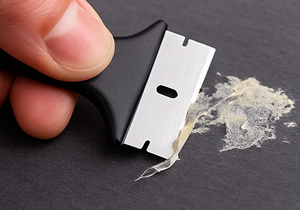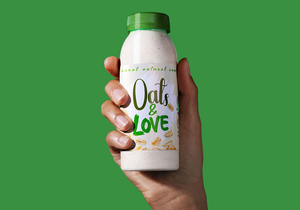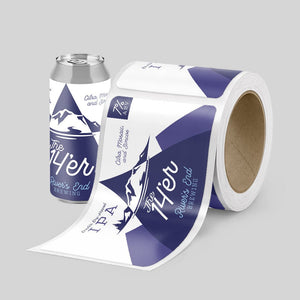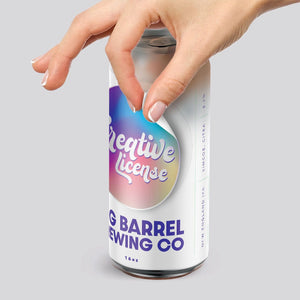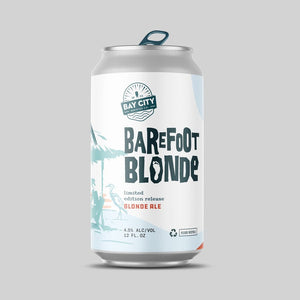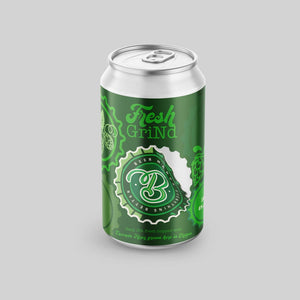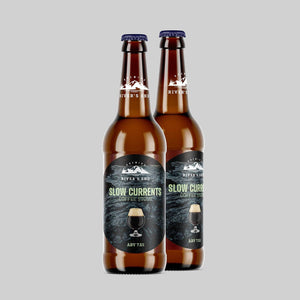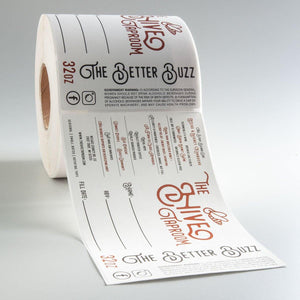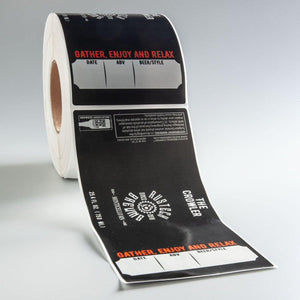What's In a Label: Custom Beer Label Requirements Made Easy

Start a craft brew brand, they said. It’ll be easy, they said. Well, they were wrong about the easy part. But starting a craft brewery you love to brag about at family gatherings with your smug cousin Jeff in attendance is more than worth the struggle.
And that struggle is real.
You’ve refined your recipe and now have a brew worthy of the World Beer Cup. You’ve poured over dozens of design concepts, and now your label is on point. The market is ready. Your warehouse is standing by.
But you hear a giant record scratch. You forgot to check the beer label requirements set forth by the Alcohol and Tobacco Tax and Trade Bureau (TTB)!
There are a lot of laws and regulations when it comes to beer labels, and excluding important information on yours can lead to a massive legal hangover in the future. But there’s no need to worry. Brew got this.
Pour yourself a cold one and settle in. We’re going to guide you through everything you need to make a beer label that hits the basic legal requirements under the Beverage Alcohol Manual (BAM).

Nothing Goes Together Like Beer and COLA
So, what can go on your beer label? Besides the eye-catching elements that entice customers to buy the drink, there are several guidelines you must follow for what can and can’t go on your custom beer label.
Additionally, there’s extremely strict verbiage you must include on your label. For example, health warnings and ingredient disclosures are a must. In legalese, the umbrella law for these different beer label requirements is called COLA.
The Certificate for Label Approval (COLA) Beer Label Requirements
COLA is the official seal of approval for mass-produced beer labels. The certificate falls under federal law and applies to interstate commerce. Interstate commerce describes something made in one state but sold in another, crossing state lines in the process. In other words, COLA is a required certification for big brewers but does not always apply to beers made and sold in the same state.
Now you probably want to sell outside your home state, especially considering the growing popularity of craft beer subscriptions and delivery apps. If you want to grow, scale, and sell online to thousands of happy customers, you’ll need to consult state and federal laws regarding COLA labeling and certification for craft brews.
While states don’t require federal COLA certification, the regulations are often similar, such that your label may require the same information it would have at the federal level.
Pro tip:
Getting your COLA certification sooner rather than later is a good idea. The sooner you get it, the sooner you can start selling your craft beer online and in other states. Get started on your COLA certification from the TTB HERE.
Also, don’t let the phrasing on these applications confuse you. The TTB refers to all beverages made at a brewery using malted barley and hops as malt beverages. Malt beverage is simply a generic, catch-all name that describes beer, ale, lager, and flavored malt drinks.
It's also important to understand that every beer labeling situation is unique and highly specific regarding the different federal, state, and local regulations. So, we can't possibly cover every little thing in a single article. But this guide should get you started with the basics. If ever you’re in doubt, contact an attorney who specializes in the craft beer industry.
With that said, let’s get into the basic COLA requirements

Basic Beer Label Requirements
All beer labels require the following elements, regardless of what state you brew in, where you sell your beer, or what specific ingredients or additives you’ve included.
What information needs to be on a beer label?
#1. Brand name
This requirement is pretty straightforward. It’s the name you’ve branded your beer under and can include the following:
- Age
- Origin
- Identity
- Other defining characteristics of the beverage
The brand name must appear on the front of the label in eligible fonts. In addition, it must be against a contrasting background color, so it stands out and is separate from other critical information.
#2. Class and designation
The TTB beer label requirements specify certain classes of beer and brewing circumstances to allow for a particular name. For example, if you want to call your beer a porter, it must meet the following criteria – at minimum:
- Brewed at comparatively high temperatures
- Contain more than 0.5 percent alcohol by volume
- Conform to trade understanding of what a porter beer is
You can’t just call your beer a porter, lager, ale, etc., just because you like how it sounds. Also, you can’t use a creative license here and make up a new classification of beer. You have to conform to legal naming and class designations.
Pro tip:
You can only designate your brew as a draft or draught if it’s not pasteurized.
#3. Name and address of brewery
You’ll need to include the name and address of the producer and bottler along with one of the following phrases:
- Brewed and bottled/packed by
- Brewed by
- Bottled/packed by
The name and address must be placed on the front of the label or branded into the container for domestic beers. As with other text, ensure your font is legible, separated from other information, and placed against a contrasting background.
#4. Net contents
List your net volume in imperial units of measurement (fluid ounces). But you can also include them in metric measurements (milliliters). Place the net contents on the front of your label, usually centered on the lower edge of the label.
Again, the contents must be in a legible font with a contrasting background and separate from other information.
#5. State and local beer label requirements
COLA does not require that you list your brew’s ABV, but most states do. No matter what, check your state laws for beer label requirements before you finalize your label design and start selling.
Also, remember that while your state might not require you to list the ABV, you should include it anyway so customers know what they’re getting into and can consume responsibly.
You can always dig into the Beverage Alcohol Manual to get a more in-depth look at these different beer label requirements.

Beer Label Design Must-Haves
You can’t just put all this information on your label and call it a day. You’ve got to use the correct spacing and fonts.
- The minimum font size on a printed label is 1mm per character for packaging under half a pint or less.
- Containers larger than half a pint must have the smallest type at 2mm per character.
- The text must always be legible and against a contrasting background.
According to the TTB beer label requirements, your text can’t blend into the design and has to be legible “under ordinary conditions.”
Health Requirements for Craft Beer Labels
Health requirements are a major must-have for beer labels and must always appear in all caps. In addition, every beer label needs to contain this exact warning verbatim:
GOVERNMENT WARNING: (1) ACCORDING TO THE SURGEON GENERAL, WOMEN SHOULD NOT DRINK ALCOHOLIC BEVERAGES DURING PREGNANCY BECAUSE OF THE RISK OF BIRTH DEFECTS. (2) CONSUMPTION OF ALCOHOLIC BEVERAGES IMPAIRS YOUR ABILITY TO DRIVE A CAR OR OPERATE MACHINERY, AND MAY CAUSE HEALTH PROBLEMS.
You’ll also need to include warnings for specific ingredients and additives if your brew includes them. These particular requirements include the following ingredients:
- FD&C Yellow #5 — CONTAINS FD&C YELLOW #5
- Saccharin — USE OF THIS PRODUCT MAY BE HAZARDOUS TO YOUR HEALTH. THIS PRODUCT CONTAINS SACCHARIN WHICH HAS BEEN DETERMINED TO CAUSE CANCER IN LABORATORY ANIMALS.
- Sulfite — CONTAINS SULFITES or “CONTAINS (A) SULFITING AGENT(S)
- Aspartame — PHENYLKETONURICS: CONTAINS PHENYLALANINE.
Next up, nutritional labels.
What about nutritional information for craft brew?
You may have seen your competitors include nutritional facts on their labels. Chances are they’re doing that as a favor to their customers because nutritional facts aren’t required for alcoholic drinks. That’s because nutritional fact requirements are the domain of the Food and Drug Administration (FDA), and the FDA doesn’t regulate alcoholic beverages.
But this rule comes with a giant asterisk
Breweries partnering with franchise restaurants must include nutritional facts on their beer labels. In fact, any franchise restaurant with 20 locations or more must list nutritional information on every single menu item — beer included.
So, let’s say you’re going to partner with a popular franchise restaurant like Applebees, Red Robin, or YardHouse. Before you do, you’ll need to make sure that you have accurate nutritional information available for your franchise friend.
Lite, light, or low carb?
Depending on their customer demographics, many craft brewers like to include information like lite or low carb on their labels. If you decide to go this route, you must have a statement of average analysis on the label containing the serving size information.
Design Your Perfect Beer Label with Stomp
The Beverage Alcohol Manual is extensive in describing what you can and can’t put on a beer label. But make no mistake — there’s still tons of room left for amazing designs and artistic expression.
If you’re ready to design a label that makes your competitor's beer bottle green with envy, Stomp is here to make it happen. Get started on your custom beer labels today with our easy-to-use design tool.
- Nashira Edmiston

